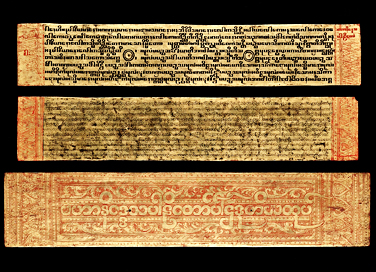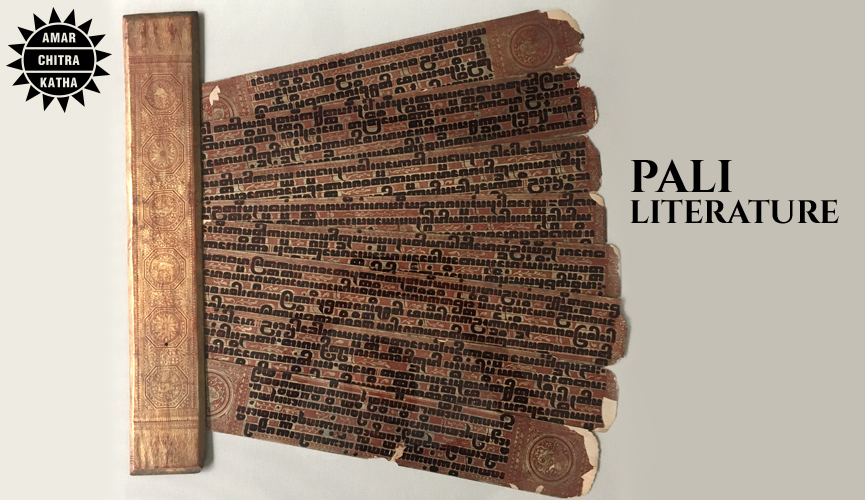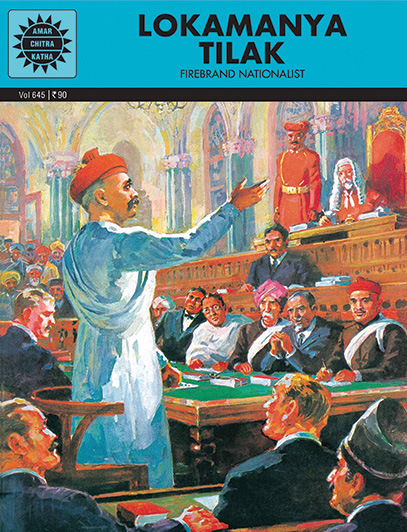What is Pali literature?
- October 28, 2020


What is Pali literature?
- October 28, 2020
By Samyukhtha Sunil
Religious and mythological texts have become vital mediums that act as a link between us and the gods that we believe in. In Buddhism, this role is fulfilled by the Pali school of literature. Primarily concerned with the Theravada sect of Buddhism, Pali literature became significant to the religion as it spread from India to other South-East Asian countries such as Burma, Sri Lanka, Thailand and Cambodia. Pali is the traditional language in which most of these works have been written and orated in.
The word Pali simply means ‘a line’ and is regarded as a Middle Indo-Aryan language that is native to India. The earliest known origins of this language are unclear, but it is believed that it began in the kingdom of Magadha in the early 17th century. It was earlier known as Magadhi, named after its place of origin in modern-day Bihar. As the language began to travel through the different regions of the country, slowly spreading to the rest of the continent, it was renamed as Pali, a language which the Theravada Buddhists believed was spoken by Buddha himself.
To receive more such stories in your Inbox & WhatsApp, Please share your Email and Mobile number.
DID YOU KNOW?
Experts believe that Buddha did not teach his disciples in Pali but an earlier variation of Magadhi. The exact language used by Buddha is still unknown!

To understand the origins of Pali literature, one has to first understand the structure of Buddhist scriptures or the Tripitaka. Tripitaka loosely translates to the three-fold basket of teachings indicating the three broad parts it covered, namely:
Interestingly, each Buddhist subsect had its own tripitaka for its monasteries written by its sangha, penned down across 32 books. The earliest forms of Pali literature are based on the tripitaka of the Theravada Buddhists. Initially, these stories were passed down from generation to generation through oral recitation. It is only during the time of Ashoka that the script came into being. Some of the best works of Pali literature are Dipavamsa, Mahavamsa, and Culavamsa, which are chronicles about the history of Sri Lanka.
While most of us see the Jatakas as ancient Indian folk stories, they actually have religious significance for the Buddhists. The Jatakas were a collection of stories said to be based on Buddha’s past lives consisting of his human and non-human avatars, and are considered an integral part of Buddhist learnings. These stories highlight the rewards of practising Buddhist virtues and morals that ultimately lead to enlightenment or moksha, freeing the soul from the endless cycle of birth and death.
The Jatakas were originally written entirely in Pali and consist of nearly 500 tales in the Sutta Pitaka. Before they were written down, the Jatakas were also shared orally. Sharing stories, fables and anecdotes was the most popular form of preaching religion in the olden days, and with its inclusion of including folk and local elements, the Jataka tales were a huge hit amongst Buddhist teachers.
Circa the 3rd Century BCE, the great Mauryan emperor Ashoka sent his son, Mahinda, as an ambassador to propagate Buddhism in the neighbouring island of Sri Lanka. Pali literature became instantly popular in the country, where the Theravada community grew in large numbers. Between the 5th and 6th centuries, an important piece of Pali literature called Visuddhimagga or “The Path of Purification” was published, written by the famous Buddhist scholar, Buddhaghosa.
Soon, Buddhism started spreading rapidly across countries in South-East Asia. The philosophical commentaries on life and the simplicity of its teachings made the religion wildly popular especially in Burma (Myanmar), Thailand, Sri Lanka, Japan, Nepal and China. More traditional Buddhist communities began adopting Pali as their language of choice for religious sermons and teachings. Numerous works in the language were published and widely circulated.
However, the ancient language could not stand the test of time, with its significance now limited to very few countries. Sri Lanka still continues to be one of the only standing Buddhist communities that actively studies Pali, and the language has been taken up for research by several Western and European countries. However, despite its waning popularity, its innumerable works even today contain many clues to the secrets of Buddhism and Buddhist history.
Read Amar Chitra Katha’s retelling of the Jatakas, now available on the ACK Comics app, Kindle and various other platforms.
To receive more such stories in your Inbox & WhatsApp, Please share your Email and Mobile number.

Comic of The Month
Lokmanya Tilak
Swaraj is my birthright and I shall have it' -- this clarion call was given by Bal Gangadhar Tilak. He was a towering figure in the Indian Independence movement. A nationalist to the core, he believed strongly that modern education would inculcate patriotism and self-respect in the people. His inspiring speeches and writing landed Tilak in jail several times. But this did not dampen his spirit or will to cast off the yoke of foreign rule from his motherland.